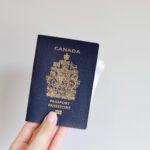Mastering the Process: Your Complete Guide to Becoming a Permanent Resident in Canada
The journey to becoming a Permanent Resident (PR) in Canada is a significant step towards enjoying many of the rights, freedoms, and benefits offered by one of the most immigrant-friendly countries in the world. Though the process can be intricate, it is manageable when broken down into steps. This comprehensive guide provides critical insights to understand and navigate the Canadian Permanent Residency process.
-
Understanding Permanent Residency:
Permanent Residency in Canada grants an individual the right to live and work anywhere within the country indefinitely. As a PR, you can avail most of the social benefits Canadian citizens receive, including healthcare coverage, protection under Canadian law, and the right to apply for Canadian citizenship.
However, there are some differences between Permanent Residency and Citizenship. Permanent residents are not allowed to vote in federal elections, cannot run for political office, and cannot hold jobs requiring high-level security clearance.
-
Eligibility for Permanent Residency:
Canada offers several pathways to PR, each with its own set of eligibility criteria:
- Economic immigration programs under the Express Entry
- Family class immigration (Sponsorship by a Canadian citizen or PR relative)
- Provincial Nominee Programs (PNPs)
- Quebec-selected skilled workers
- Humanitarian and Compassionate grounds
- Caregivers program
- Refugees and protected persons
Eligibility may depend on language proficiency, work experience, education, ability to adapt to Canada, and whether you are inside Canada or abroad. Understanding these criteria is vital in determining the best path to pursue. Understanding these programs and choosing the right one for your circumstances is crucial to successfully obtaining permanent residency and ultimately creating your life in Canada. This guide aims to provide a comprehensive understanding of Permanent Residency in Canada, helping you to become a part of the Canadian community.
-
Application Process:
Once you have identified the appropriate pathway to Permanent Residency (PR) in Canada and confirmed your eligibility, the application process can be commenced. This typically involves completing and submitting an application form, providing supporting documents to substantiate your eligibility, and paying the required application fee. The Process, the processing offices, and the rules vary for applicants inside and outside Canada.
Here’s a more detailed breakdown:
- Choosing the Right PR Program: First, you must choose the right PR program that suits your qualifications and circumstances. Canada offers various pathways to PR, such as Express Entry, Provincial Nominee Program, Family Sponsorship, or the Business Immigration Program.
- Determining Eligibility: Each PR program has its own eligibility requirements. Age, language proficiency, education, work experience, and financial ability are usually considered.
- Preparing the Application: The next step is to fill out the appropriate application form for permanent residence. It can be found on canada.ca, the Canadian government website, where you must create an account. These forms usually ask for detailed personal information, education, work history, reasons for immigration, and more.
- Gathering Supporting Documents: You must provide documents to support the claims you make in your application. This could include identification, proof of language proficiency, educational credentials, work experience documents, police clearance certificates, etc.
- Payment of Application Fee: The application process usually involves paying specific fees. The amount will depend on the PR program and may include processing fees, right of permanent residence fees, biometrics fees, etc.
- Submission of Application: Once the application is filled out, all necessary documents have been collected, and fees have been paid, the application can be submitted to the appropriate immigration office or online, depending on the specific program.
- Waiting for a Decision: After submitting your application, there will be a waiting period while your application is processed. Processing times can vary greatly depending on the program, the completeness of your application, and the number of applications the immigration office handles.
- Pre-Approval Steps: If your application is considered complete, there may be additional steps to complete, such as completing a medical examination, providing biometrics information, or attending an interview.
- Post-Approval Steps: If your application is approved, there may be additional steps to complete, such as providing your original passport or a copy, confirming your presence in Canada through a portal if applicable, and finally being ready to receive your official status document.
It’s important to note that all the information provided in your application should be accurate and truthful. Misrepresentation can lead to the refusal of your application or even legal consequences. Professional guidance from a certified immigration consultant or lawyer can be beneficial in navigating this complex process.
-
Medical and Background Checks:
All applicants must pass a medical exam and background check. This step ensures you pose no health risks to Canadian citizens and have no criminal history that might make you inadmissible to Canada.
-
Application Review and Decision:
Upon receipt of your application, Canadian immigration officials will review your application. They will contact you if they require additional documents or clarification on the information provided. Once the application is thoroughly examined, they will make a decision.
-
Confirmation of Permanent Residence (COPR) and PR Card:
If your application is approved, you will receive a Confirmation of Permanent Residence (COPR) and your PR card. The COPR is a status document that you need to prove your status; however, when you travel to Canada, the PR card and your national passport are the mandatory travel documents used to re-entry the country on a commercial vehicle (like an airplane, bus, train, or boat).
-
Settling Down in Canada:
Once you have obtained your PR status, it’s time to prepare for life in Canada. Learn about the culture, laws, and norms, and make arrangements for housing and employment. Being a PR also allows you to access various services and benefits, such as healthcare, education, and social programs.
The journey to becoming a Permanent Resident in Canada can be challenging, but it is entirely attainable with careful preparation, understanding of the process, and adherence to all the procedures. As you navigate the process, refer to the official Government of Canada website for the most accurate and current information.





